When to Tone Hair After Bleaching?
Updated on
This post may contain affiliate links. As an Amazon Associate, we may earn from qualifying purchases.
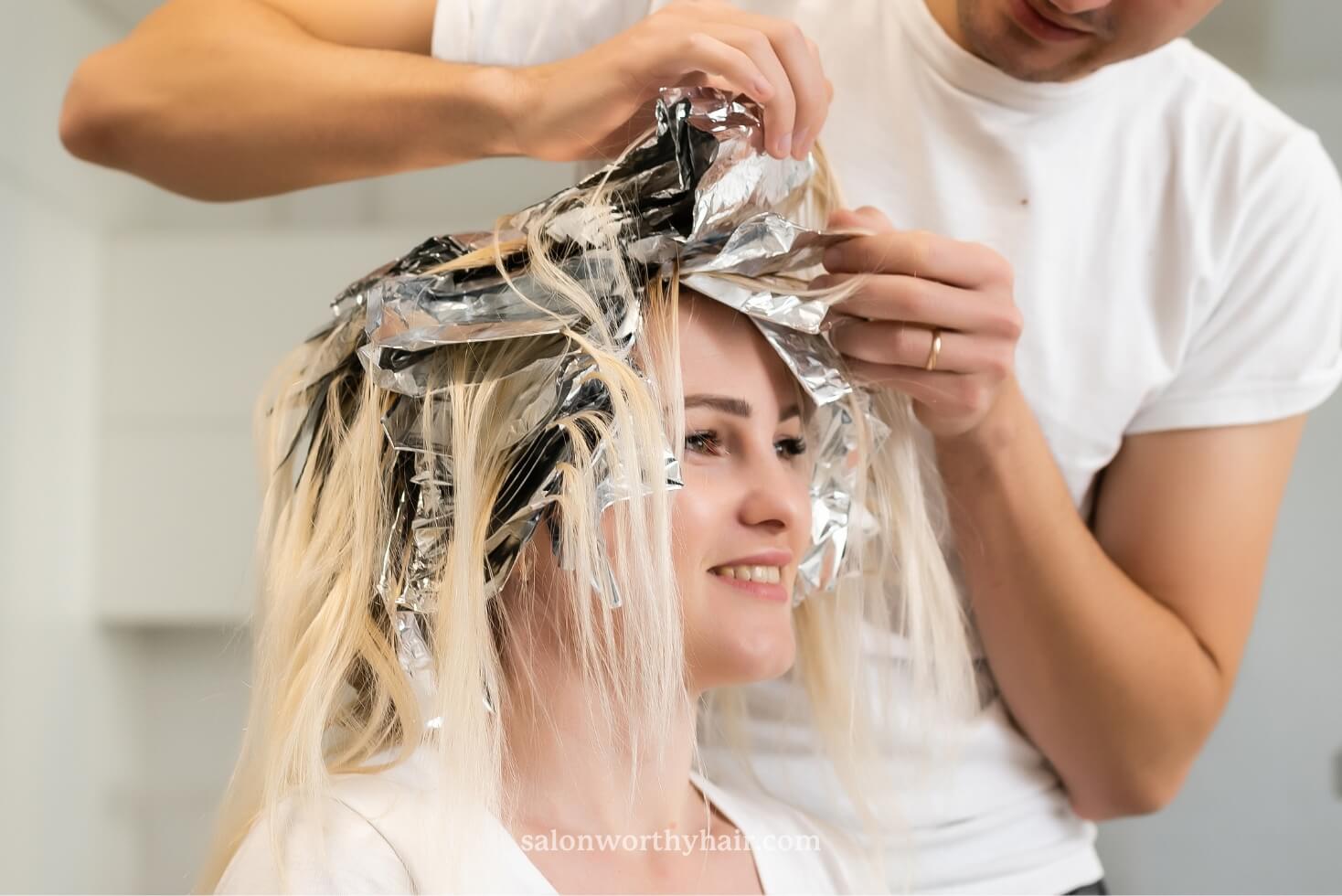
Toning hair after bleaching is not a one size fits all.
The right time to do it may vary depending on factors such as:
- The condition of the hair,
- The strength of bleach used,
- The amount of lift,
- The individual’s hair type and porosity,
- And the desired result.
Blonde hair naturally pulls more yellow, brunettes pull more red and ashy tones, and people with dark hair may need a second round of bleaching if the hair needs to be lightened more.
With so many conflicting opinions like toning immediately after bleaching or waiting 24-48 hrs, it can be confusing to decide which option to go for.
But ultimately, it’s your hair that decides.
Properly assessing one’s hair is the only way to accurately determine the best time to tone the hair after a bleaching treatment.
Failing to do so can result in hair damage and undesired results.
Wait 24-48 Hours After Bleaching to Start Toning Hair
The consensus is to wait 24-48 hours after bleaching to start the toning process.
That’s because the hair needs to be thoroughly washed and conditioned to ensure any bleach remnants have been removed. It also needs to reach the desired level of lightness and natural pH balance.
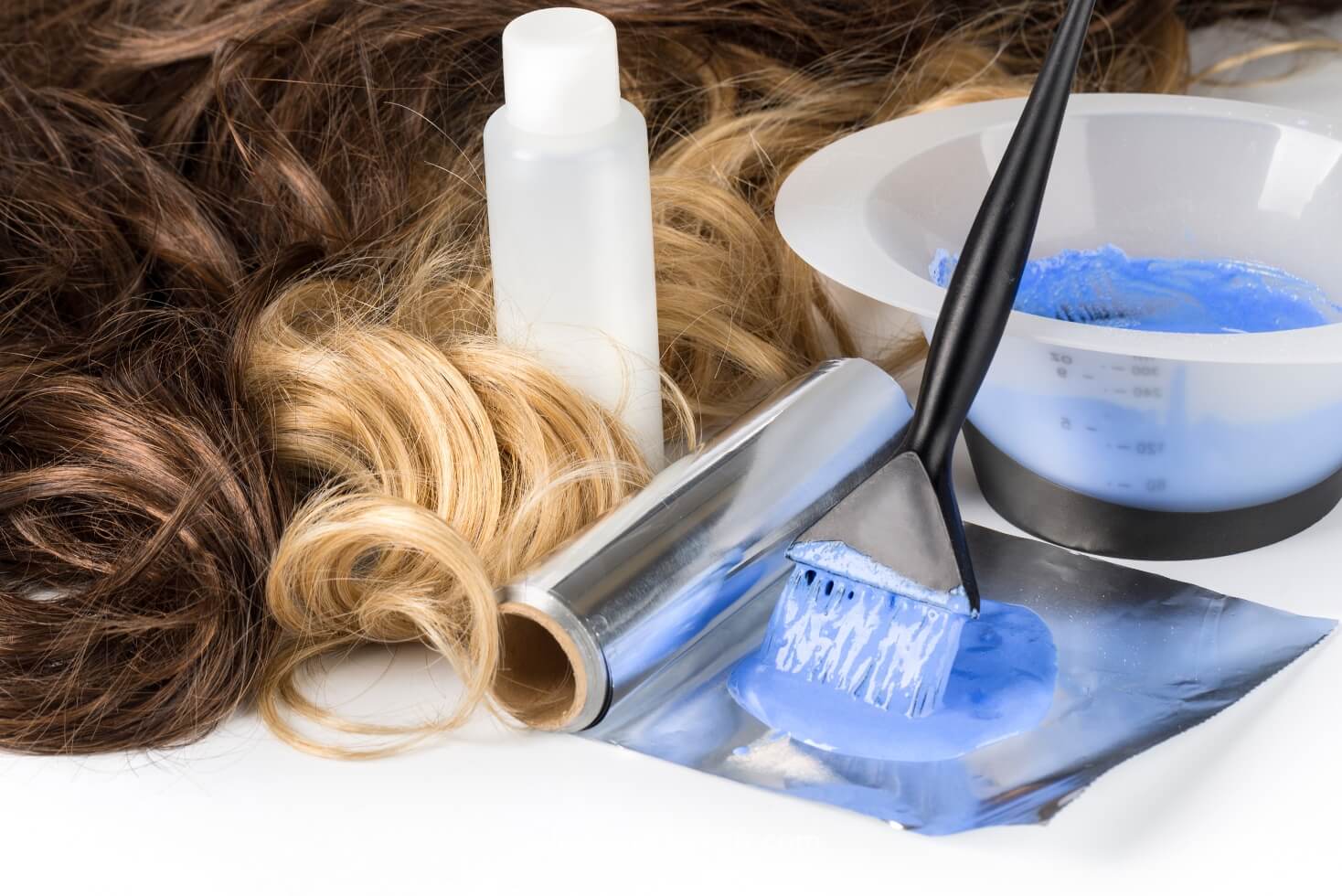
A good bleach recovery shampoo must be used to help restore strength and balance to the hair.
Waiting until the hair has been washed and dried allows a more accurate assessment of the hair’s color and condition.
But let’s be honest; we’ve seen many hairdressers use toners immediately after a bleaching treatment, and the results have been stunning.
The truth is, there is no written rule for it. The timing will depend on the condition of your hair after the treatment and the end result you want to achieve.
Things to Consider Before Toning Hair After Bleaching
1. Start With a Hair Assessment
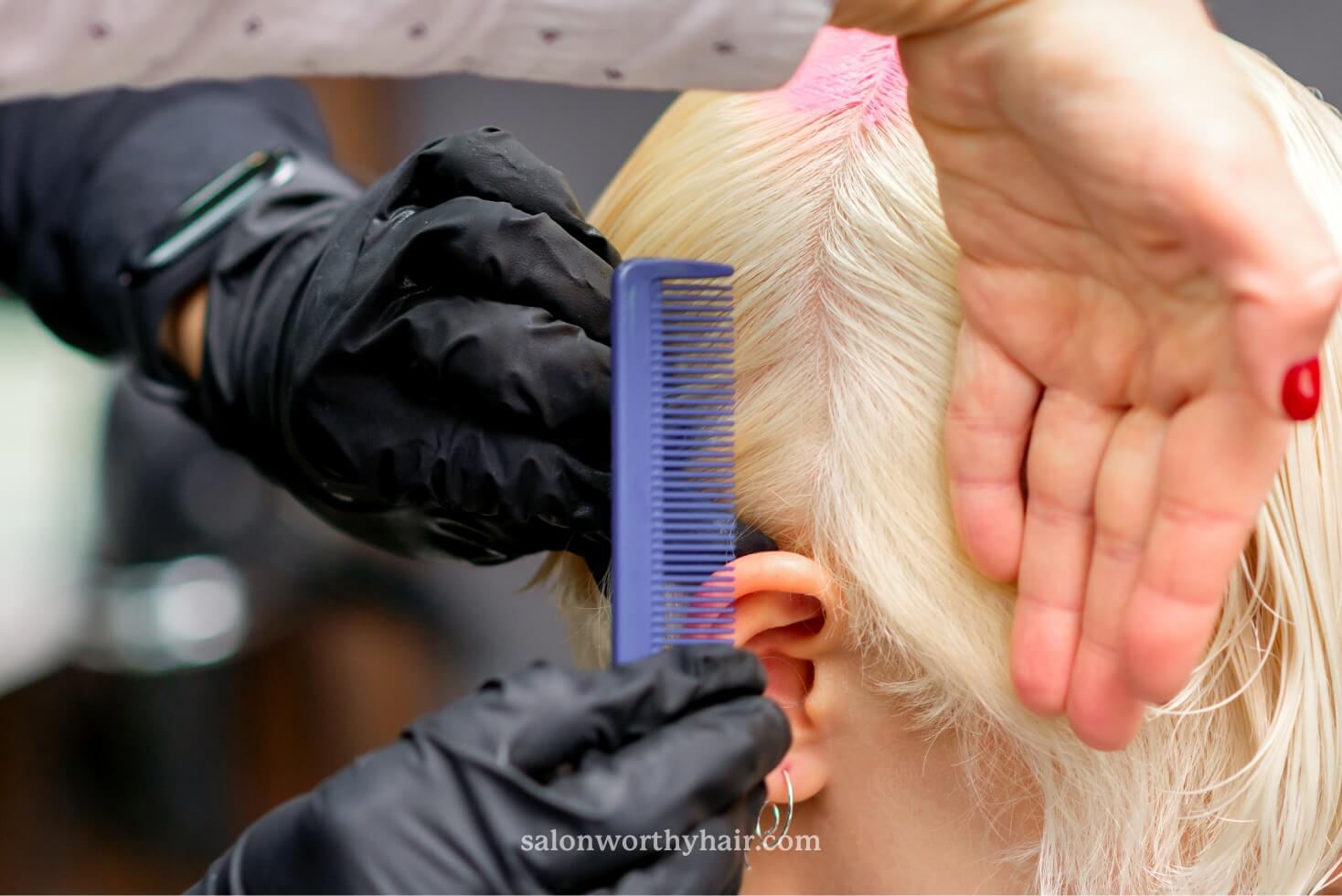
Assessing the hair means examining its texture, porosity, and any signs of damage. You must also check for signs of warm and brassy undertones. If you want a more accurate assessment of your hair’s condition, ask for the help of a professional hair stylist or hair colorist.
If you have no hairdressing experience, you will most likely struggle to make an accurate assessment. So do not rush this process and get help.
Here are the reasons why a hair examination is essential before applying a toner to recently bleached hair:
- It will help prevent hair damage.
- It will help to pick the correct toner and developer volume.
- It will help to achieve the correct results faster.
Once you’ve gauged the condition of your hair, follow the guide below to pick the timeline that best suits you based on your hair’s condition.
2. Do Not Tone If Bleaching Results Are Satisfactory
Toning the hair immediately is unnecessary if the result after bleaching is satisfactory.
A hair toner is typically used to neutralize unwanted tones from the natural hair color (underlying pigments). If the desired level of lightness is achieved during the bleaching process and no undesirable tones are left in the hair, toning is not required.
However, taking proper care of your hair after bleaching is still important to maintain its health and vibrancy. This includes deep conditioning the hair frequently to restore moisture and prevent breakage and using color-protecting hair products to ward off brassiness.
3. Tone Immediately If There Are Warm Undertones and the Hair Is Not Damaged
After bleaching, if there are signs of warm undertones and the hair is still healthy enough, toner can be applied on the same day or even immediately after washing and drying. The colorist can start with a low developer, such as 20 volume, and gradually increase it as they work through more difficult areas of the hair to achieve even toning.
4. Wait 24 – 48 Hrs to Tone If Hair Is Fragile After Bleaching
Fragile hair will be more susceptible to breakage and damage, so giving it time to recover is important. A professional colorist may recommend waiting 24 – 48 hours before applying toner.
This will allow time for the hair to heal, and it also allows you to gain a better understanding of what you want your final result to look like.
5. Wait 10 Days to Tone If Hair Is Damaged
If the hair is damaged (fragile, dry, and brittle), it’s best to wait at least 10 days before applying toner. Until then, it is recommended to use bleach recovery products to help rehab the hair into a good state.
Aura Friedman, Senior Colorist and Creative Director at Suite Caroline Salon in New York City, suggests looking for conditioning toners, as these will be most beneficial to damaged locks.
Things to Keep in Mind Before Toning
You might want to jump right into toning, but there are a few things to keep in mind before that.
Porosity is not uncommon to be different throughout the hair, especially after being chemically treated. After bleaching or dyeing, porosity causes uneven, brassy, or yellow tones on the hair strands. That’s why equalizing your hair’s porosity is very important before applying toner.
You can use a porosity-equalizing spray, for example, before you tone your hair.
You need to also ensure that toning is required. If you are satisfied with the bleaching results and don’t need any color adjustment or correction, you don’t need to tone your hair.
The two go hand in hand if those uncomplimentary brassy tones appear. If you don’t need to use hair toner, you can simply use maintenance toners like purple or blue shampoo to keep the color and its vibrancy.
Tips for Toning Hair After Bleaching
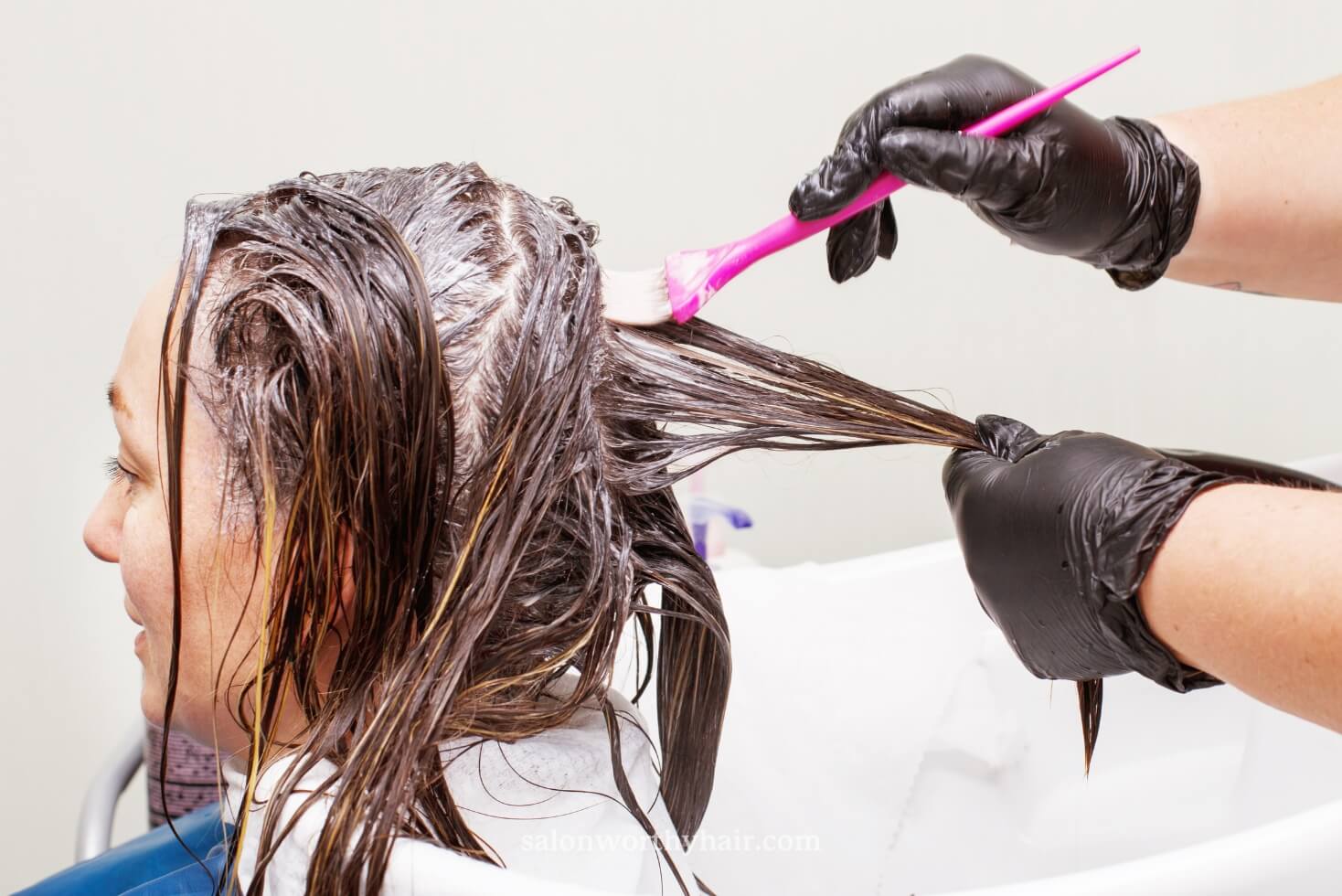
Toning your hair may sound simple, but you should know how to apply toner correctly to reach that healthy treated hair and the desired color. If you’ve never used toner before, here’s the 101 for toning your hair after bleaching.
1. Rinse All Bleach First
Toner must be applied to clean hair after bleaching because any residue or leftover bleach on the hair can interfere with the toner’s ability to work effectively. Residue from bleach, which is alkaline, can also cause the toner to react differently, resulting in uneven color or damage to the hair.
Therefore, before you start toning, wash and fully rinse the bleach from your hair, behind the ears, or at your hairline. Wash with cool to lukewarm water and sulfate-free shampoo.
Don’t use hot water to rinse bleached hair. Bleached hair is already vulnerable, as the bleach has stripped it of its natural oils and moisture, making it more prone to breakage and damage. Hot water can exacerbate these issues by further stripping its oils and moisture, leading to dryness, frizz, and breakage. It can also cause the hair cuticles to open up, making the hair more porous and susceptible to damage.
Once done, towel dry your hair. Avoid adding heat to your hair after bleaching to obtain that healthier look.
2. Pick the Right Toner
You must pick the right toner depending on the color you try to achieve. For example, purple shampoo is great for neutralizing brassy and yellow undertones, while blue toner is great for orange tones.
Avoid Ammonia-based toners after bleaching if the hair is already damaged. That’s because ammonia is a harsh chemical that can break down the hair’s protein structure. It’s also an alkaline and oxidizing agent. Bleaching itself can cause significant damage to the hair, stripping away its natural oils and proteins and leaving it more porous and fragile. Ammonia can exacerbate this damage.
Additionally, there are tinted shampoos, high-concentration toners, and glosses. Depending on what you want to achieve, you need to choose the toner according to it. Tinted shampoos are milder and can be used instead of your regular shampoo. High-concentration toners are usually used in conjunction with a developer. The gloss is for refreshing any hair color.
When it comes to professional-grade hair toners, you should leave them to the stylists as it’s very easy to use improperly and does more damage than good.
So, if you’re unsure what you’re doing, it’s best to stick to toning shampoos.
3. Applying the Toner
Generally, toners work on dry to damp hair. To see which one works for you, check the package, and follow the instructions.
Either way, you must wait for a little for your hair to dry. Once your hair is prepped according to the package instructions, remove gloves and applicator brush. Put toner on the brush and apply it equally on every hair strand.
Check out the package to see how much time you should leave the hair toner. It’s important to follow the given instructions, so you can get the desired hair color. Washing before or after the suggested time may discolor your hair, and the worst part is that you cannot reapply toner again.
On average, after 2-6 weeks, you must reapply toner to refresh the hair. Each toning is individual, and its longevity depends on the hair type and condition.
Listen to Your Hair
Bleach and toner have a complementary relationship. While bleach dries the hair through oxidation, toner neutralizes the irregularities by making the hair color rich and healthy.
However, just because the toner makes the hair look healthier doesn’t mean it’s always good.
Listen to your hair. If it doesn’t need toning, don’t force it.
About the Author
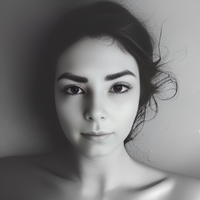 Tina Moretti
Tina MorettiTina Moretti, a passionate hair care enthusiast with over a decade of expertise, dedicates herself to empowering women with proven hair care advice. Recognized for her hands-on experience and trusted guidance, Tina turns every strand into a statement of beauty and confidence.